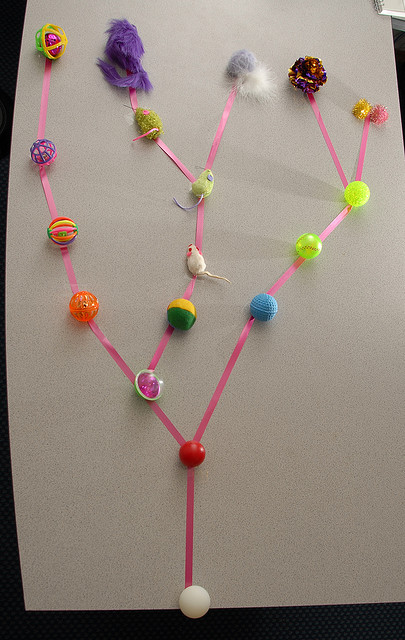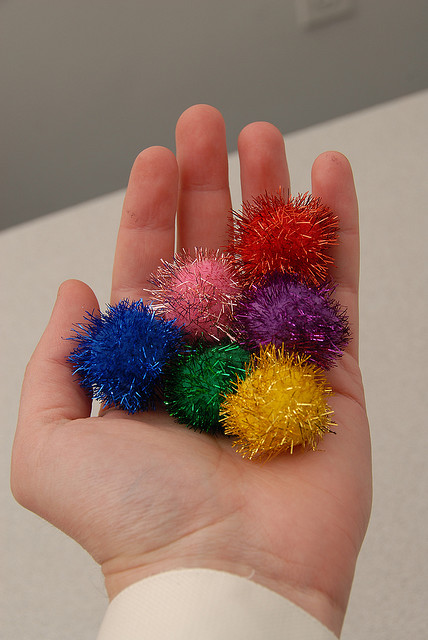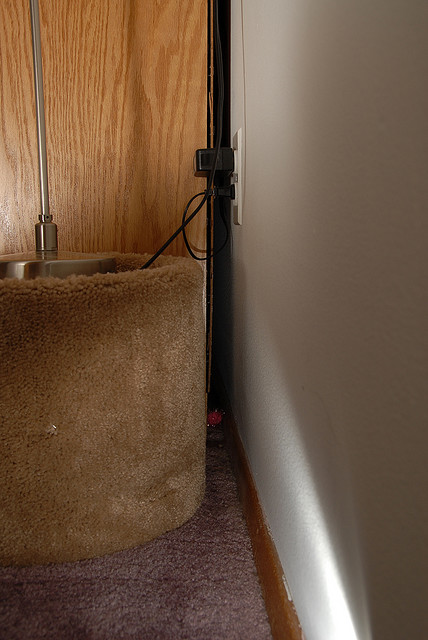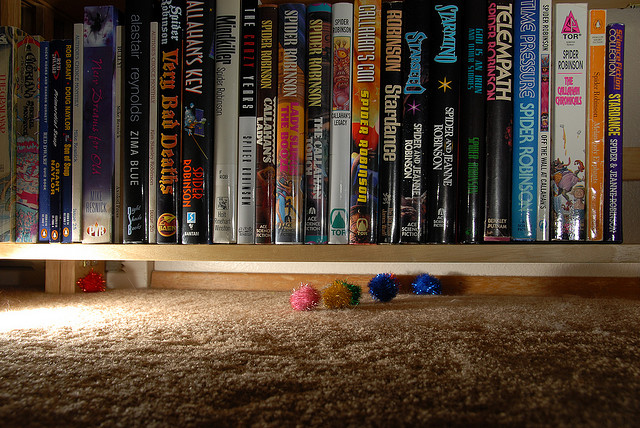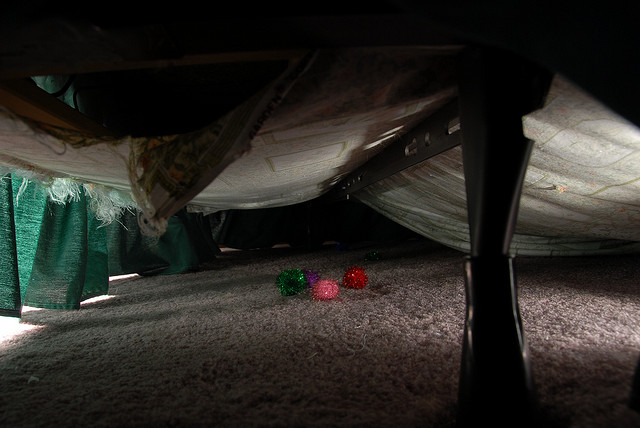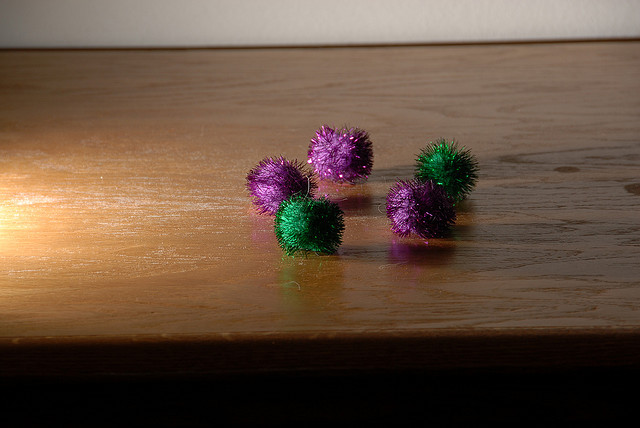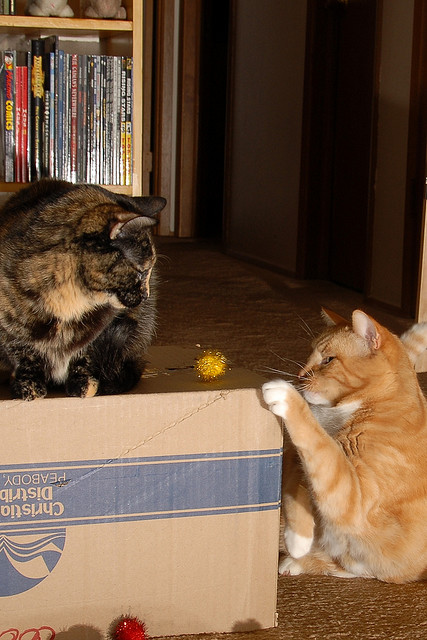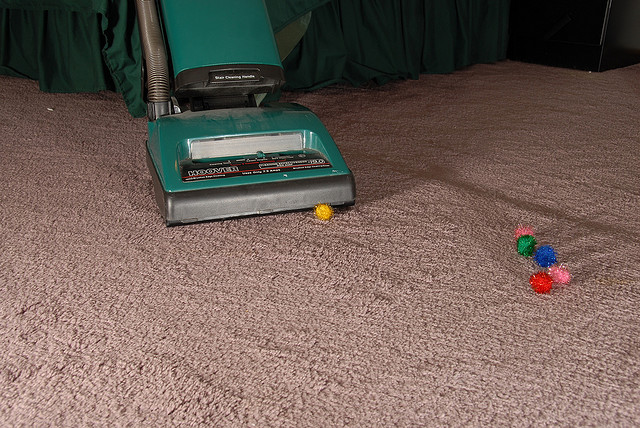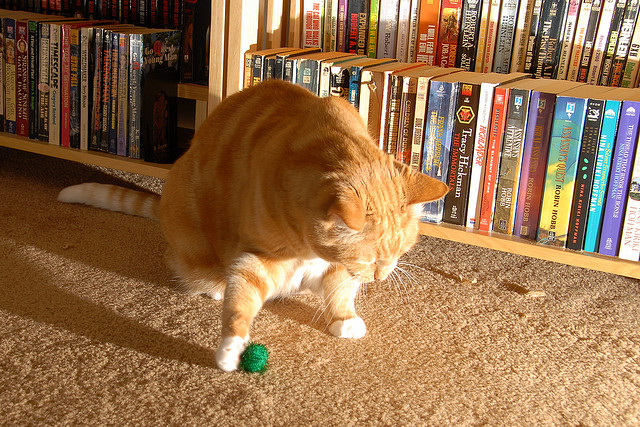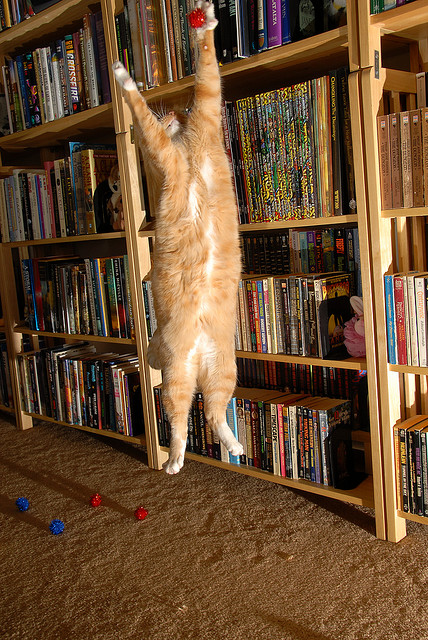Introduction
The Little Fuzzy Sparkly Balls were once common throughout 2000 square feet in central Iowa. However, in recent years, their population has been on the decline. Due the conservation efforts among several recovery centers scattered throughout the United States and Canada, this species has been given a second chance at success. Recovering from their all time low of less than 10 individuals, they now exist in a tentative but growing population… both in their home range and abroad.
It is hoped that this document will inspire you to adopt some Little Fuzzy Sparkly Balls of your own and contribute to the long term survival of this unique and colourful species.
Evolution and Ecologies
Due to a poor and spotty fossil record, much of what is known about the evolutionary history of this species comes from a handful of specimens. Fragmentary evidence suggests that the Little Fuzzy Sparkly Balls branched off of the more common Little Fuzzy Balls in early 1970s. Quickly popularized by the burgeoning Glam Rock movement, this new species was quickly elevated to the world stage, serving as high-profile pets and accessories for pop stars and pop star wannabes.
Though they have a several close relatives, the Little Fuzzy Sparkly Balls do form their own species. Attempts to cross breed them with other close relatives has proven unsuccessful, though quite entertaining. The members of this species are easily distinguished from others in their genus by the presence of sparklacles (or, more commonly, sparkly bits), which are used to distract predators, dazzle prey, and regulate heat. The change in texture also helps to prevent ingestion.
(Phylogenetic tree showing evolutionary path of little fuzzy sparkly balls)
Upon occasion, a Little Fuzzy Sparkly Ball may fall from a great height (this most often occurs when a cat chases them off a counter or table top). To help prevent injury, they have to fluff out their fuzzacles (or, more commonly, fuzzy bits) as much as possible, increasing their surface area to minimize their rate of fall.
Breeding and Raising Young
In early Spring, the snows melt, the robins return, and the Little Fuzzy Sparkly Balls indicate their readiness to mate by vibrating their sparklacles at specific ultrasonic frequencies. Each individual has a specific pattern, and mates are selected from those whose patterns harmonize. Like other shy and retiring species (such as the albatross, the mongoose, and the geek), females have to actively seek out the males and encourage them to begin courting. Once the female has chosen the male of her preference, the male offers the female a small object (pennies, paperclips and novelty paperweights are common gifts), which, once accepted, is used to decorate the nest. Since Little Fuzzy Sparkly Balls mate for life, over years the nest can accumulate several pounds of emotional memorabilia. Once they have selected their mates, the pair builds the nest together and share equally in the raising of the pups.
On rare occasions, the males may exhibit violent behavior during the mating period, but then, so may the females. This behavior will often culminate in each partner attempting to out-sparkle the other during the mating act. This Sparkle-And-Mating, or S&M behavior seems to be mostly ritualistic, as it immediately ceases when either partner vibrates their sparklacles in a previously-determined pattern. Other rare mating behavior can include situations where one Little Fuzzy Sparkly Ball traps another under a nearby item (books, coasters and food dishes are common), effectively immobilizing it.
Other groupings have been observed, including triads, quandaries, and pentaploids as well as what are likely same-sex unions. However, it is quite difficult to sex Little Fuzzy Sparkly Balls, so it is just as likely that such pairs are “just good friends”. Just-friends pairings seem to be more common on the Southern side of the house.
These smaller mated groups tend to aggregate into tribes of five to eight adults. They will work together to raise the pups (a typical family of six can be comfortably cradled in the palm of one hand) and will huddle together at night to conserve warmth. They will often hibernate near warm AV equipment during the long and cold winter months. The pups generally grow to adulthood within a year, after which they generally join a different tribe and seek mates of their own.
(A family of six)
Feeding
Little Fuzzy Sparkly Balls primarily subsist on house dust, and are often found underneath furniture and behind bookcases. Many choose to graze throughout the day, but in times of plenty, several Little Fuzzy Sparkly Balls may band together and form hunting parties. These parties will set off in search of dust bunnies. When attacking a dust bunny, Little Fuzzy Sparkly Balls generally work in groups of three, feinting and drawing away the defense and allowing a single attacker to penetrate the soft and fluffy hide. Once attached, it injects a numbing nerve toxin which paralyzes the dust bunny, allowing the hunting party to feed before bringing the remaining carcass to the rest of the tribe.
(A little fuzzy sparkly ball having a quiet dinner behind the dresser)
(Little fuzzy sparkly balls are commonly found beneath bookcases)
(A hunting party forays into the deep and dark underbed in search of a dust bunny)
The green and (to a lesser extent, purple) Little Fuzzy Sparkly Balls are also capable of photosynthesis and can occasionally be seen basking in the rays of the morning sun. This, sadly, is often when they are at the greatest risk of predation.
(Greens and purples basking in the light of the morning sun.)
Threats
Little Fuzzy Sparkly Balls have extremely poor senses of smell, sight, hearing and taste (hey, they eat dust, remember!), due largely to their complete and utter lack of eyes, ears, nose and tongue. They make up for this, however, with their extremely sensitive sense of touch, reacting almost instantaneously to the slightest hint of danger. Though they move at an average of five feet per hour, this can increase drastically the instant that they feel a paw touch their sparklacles.
Threats come in many forms, but tend to primarily fall into three categories.
Predators
The primary predators of the Little Fuzzy Sparkly Balls are cats and vacuum cleaners. Though cats tend to be significantly more nimble and intelligent than the vacuum cleaners, they are escaped from surprisingly often. In contrast, once a vacuum cleaner gets a hold of a Little Fuzzy Sparkly Ball, its fate is all but certain. Virtually none have been seen after entering that flat gaping maw (with cleaning edge).
(Two vicious cats corner their prey between them)
(Little fuzzy sparkly balls watch in horror as the vacuum claims on of their own.)
The Little Fuzzy Sparkly Balls, however, are not entirely defenseless. When attacked out in the open, they will often glitter brightly in an attempt to distract the enemy and alert others of their tribe of the danger. In fact, there have been some instances of observed cooperation with nearby laser pointers. In such circumstances, the glittering flares to such an extent as to dazzle the attacker. This seems to be most successful when the colour of the Little Fuzzy Sparkly Ball matches the colour of the laser.
(Cat being distracted from attack by heavy sparklage)
They are also remarkably compressible and can hide in the most unlikely places, including underneath furniture that is without legs and (surprisingly) under that drawer thing at the bottom of the oven. (Seriously, there were like a bazillion of them there when I moved last.) In times of extreme danger or gluttony, they have been known to roll themselves in dust and camouflage themselves as dust bunnies to avoid cats. Inexplicably, this seems to make them increasingly vulnerable to vacuum cleaners
(Despite impressive aerobatics, even the most athletic little fuzzy sparkly balls have difficulty escaping predators)
Habitat Loss
Recently, the home range of the Little Fuzzy Sparkly Balls was drastically reduced when the discovery of mold necessitated the removal of a full third of their habitat. Now, dull concrete and bare cinder block walls have replaced the formerly carpeted and faux wood-paneled area. Unadapted to such harsh conditions, the population has relocated entirely to the upper floor of the domicile. Reconstitution efforts are underway, but have been slowed due to lack of funds and general interest in the status of this species.
Fashion
It is possible that a resurgence of appreciation for bright and scintillating colours could remove a number of Little Fuzzy Sparkly Balls from the breeding population. Though the existing “retro” movement is not sufficiently large to impact the recovery of this species, steps are being taken to establish “Glitter Farms”, where entities whose genetics are not required for long-term survival can be slaughtered and sold to designers in France and Italy. In this way, environmentalists and industry are attempting to work together to mutually achieve shared goals.
Long Term Survival
In recent years, there has been some basis for optimism for the fate of this fine species. An international network of cats have banded together to help promote conservation, in the hope that their kittens and their kittens’ kittens will be able to experience the joy of NOMing a previously un-NOMed Little Fuzzy Sparkly Ball. Though still ignored by the Convention on International Trade in Endangered Species of Wild Fauna and Flora and the Convention on Biological Diversity, there is hope that grass-roots efforts will raise awareness of the Little Fuzzy Sparkly Balls, and conservation efforts can spread out of the Midwestern United States (and that one apartment in Canada).

